Idea by
Adrián González del Campo
http://adriangonzalezdelcampo.tumblr.com/
Call for ideas 2016
Micronations
Micronations
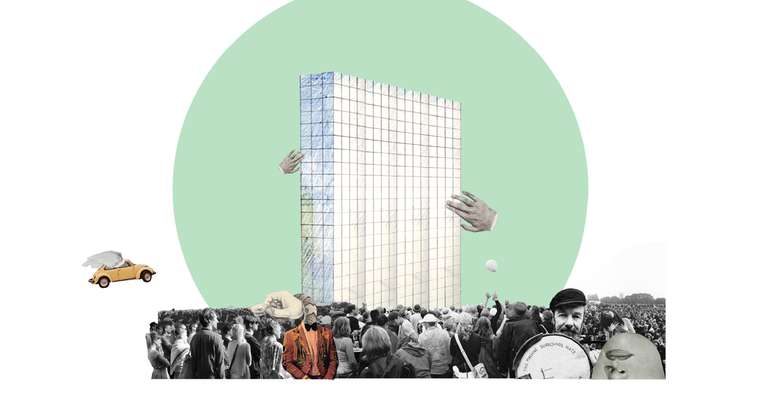
Unfortunately, the project is not the answer, it’s simply a response to circumstances at a certain time, the beginning of a thought. Miles Davis notes that since the 90's, urban population is higher than the rural, the widespread growth of human population is a fact, and economic and social crisis have shown that the housing has gone from being a right, to be a business. So the idea is a housing building generated with the empty as a logical way to manage the project. The building grows based on real growth and not on speculation, where the programmatic gaps are filled by places created by users and not by private enterprise. What is generated is a starting point, only thought through projectual utopia that give meaning to everything. You would think as the object continues to grow, as this theoretical tower is amplified by the users themselves. This growth breaks down the barriers of the building as object generating something, a sense of belonging, a micronation.
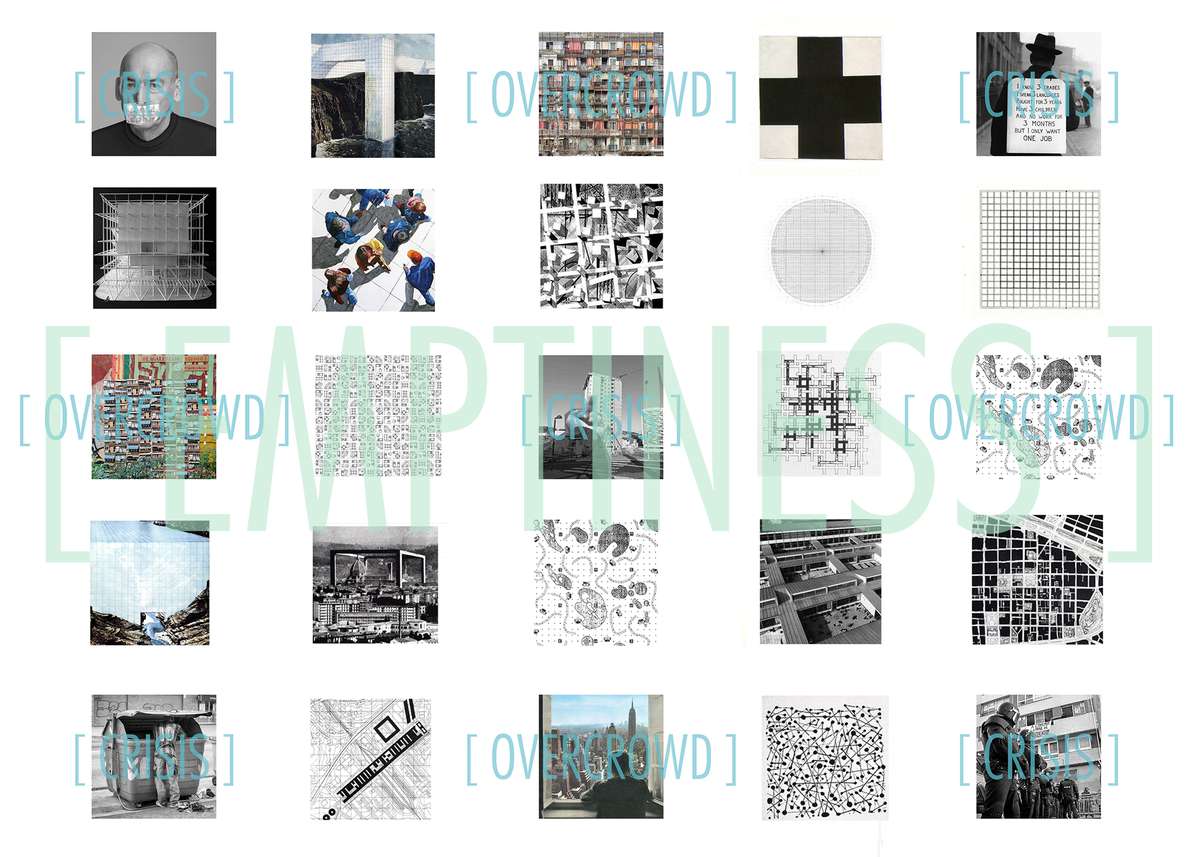
"Sistalgia" is the feeling of sorrow or sadness caused by the absence of homeland, places and loved ones that are not known or yet unknown.
Then "sistalgia" moves the world, moves the human being. The "sistalgia" moves an artist to change the establishment, the sistalgia moves people to see new places. The "sistalgia" moves the architect to create new spaces, and moves to those who can not conform to the reality, or to the romantic idea of Utopia.
"Sistagia" moves the world.

Uncertainty and indeterminacy principle in architecture and housing.
The uncertainty principle or uncertainty housing establishes that it is impossible to know the exact position of use in the space, and therefore it is impossible to determine its exact use. The higher the accuracy with which the use is known, the greater is the error in the representation and vice versa. It is only possible to determine the probability that the furniture is in a certain region.

A flexible housing is proposed, flexibility understanding the arrangement of elements and the parts, not as a host of devices that compartmentalize spaces. A review of the housing is made, reducing materials and focusing the housing generation growing around a minimal installation core around an emptiness which varies with the use and time.
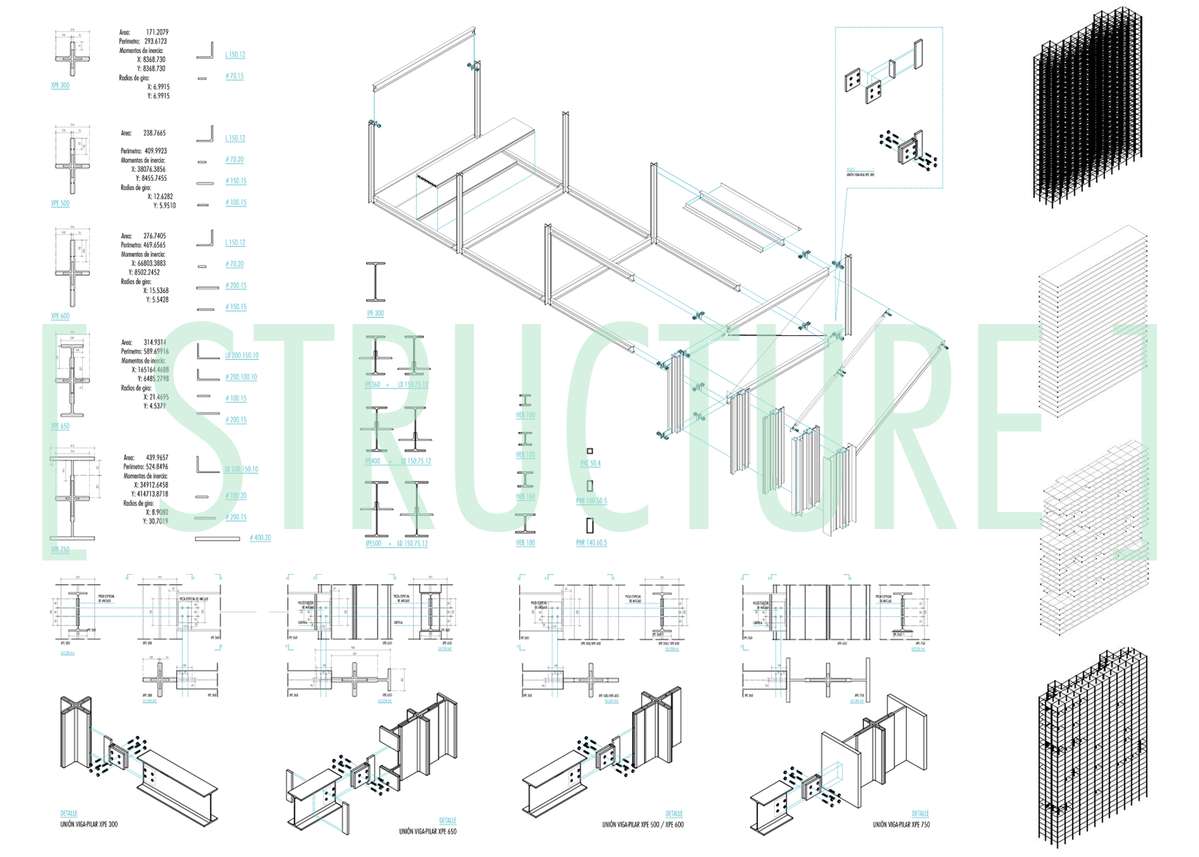
The structure is continuous, thus becoming the rule of the future construction of the building and adjusts the module housing. This structure will also become the limit of the construction as well as the wall was the edge of the old city, but can always be exceeded, and finally the structure becomes nothing, when the vacuum can not be built. This structure is theoretically implemented through cross sections, allowing the possibility to introduce reinforcements to help grow the building.
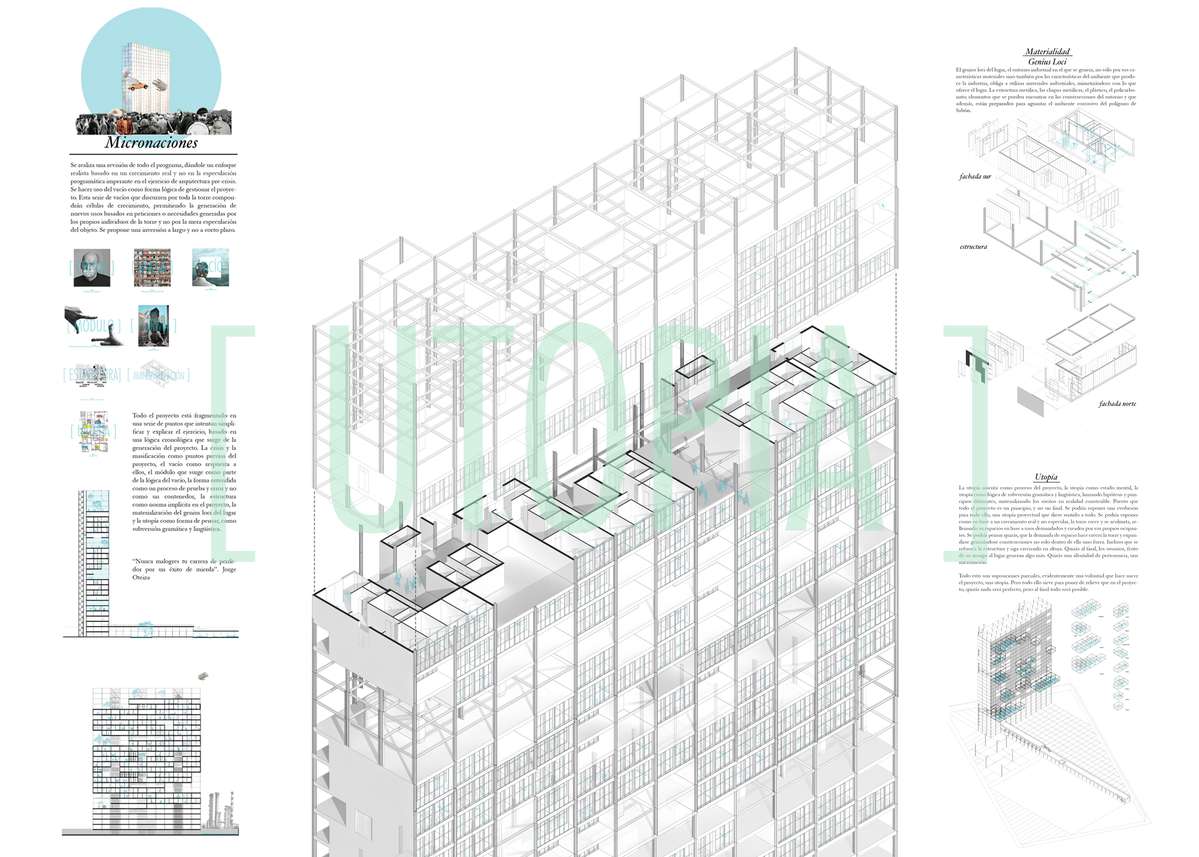
At the end, nothing will be perfect, but anything will be possible.
Finally, what is generated is a starting point, only thought through proyectual utopia that give meaning to everything. You would think as the object continues to grow, as this theoretical tower are amplified based on places generated by the users themselves. This growth breaks down the barriers of the building as object generating something, a sense of belonging, a micronation.
Micronations
Micronations

Unfortunately, the project is not the answer, it’s simply a response to circumstances at a certain time, the beginning of a thought. Miles Davis notes that since the 90's, urban population is higher than the rural, the widespread growth of human population is a fact, and economic and social crisis have shown that the housing has gone from being a right, to be a business. So the idea is a housing building generated with the empty as a logical way to manage the project. The building grows based on real growth and not on speculation, where the programmatic gaps are filled by places created by users and not by private enterprise. What is generated is a starting point, only thought through projectual utopia that give meaning to everything. You would think as the object continues to grow, as this theoretical tower is amplified by the users themselves. This growth breaks down the barriers of the building as object generating something, a sense of belonging, a micronation.
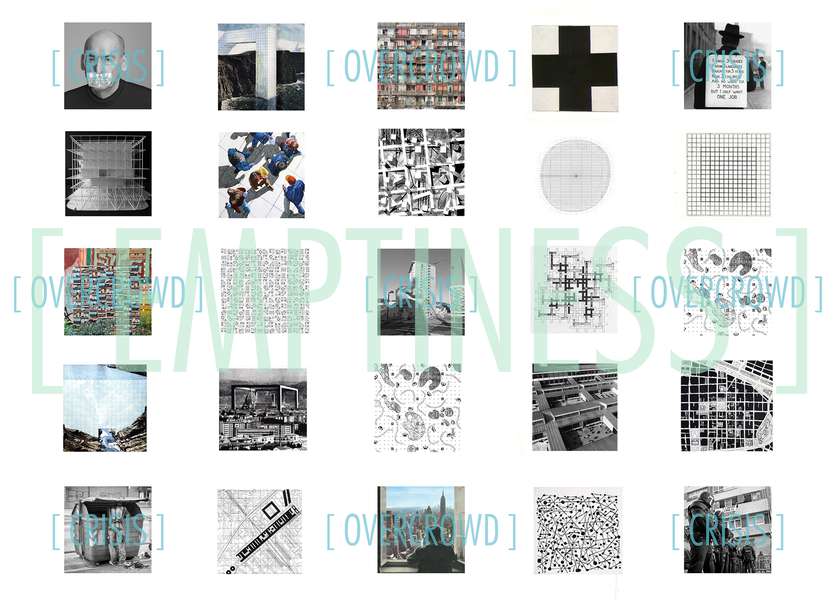
"Sistalgia" is the feeling of sorrow or sadness caused by the absence of homeland, places and loved ones that are not known or yet unknown.
Then "sistalgia" moves the world, moves the human being. The "sistalgia" moves an artist to change the establishment, the sistalgia moves people to see new places. The "sistalgia" moves the architect to create new spaces, and moves to those who can not conform to the reality, or to the romantic idea of Utopia.
"Sistagia" moves the world.

Uncertainty and indeterminacy principle in architecture and housing.
The uncertainty principle or uncertainty housing establishes that it is impossible to know the exact position of use in the space, and therefore it is impossible to determine its exact use. The higher the accuracy with which the use is known, the greater is the error in the representation and vice versa. It is only possible to determine the probability that the furniture is in a certain region.
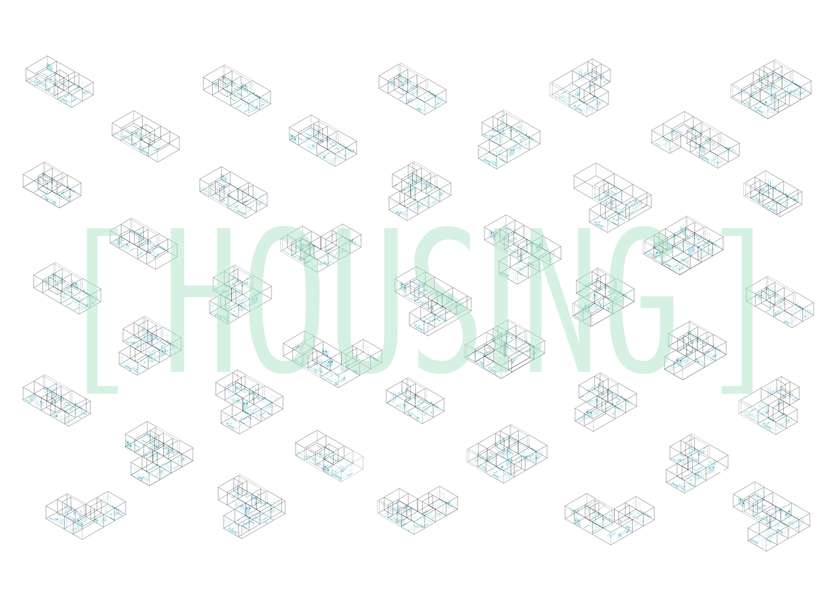
A flexible housing is proposed, flexibility understanding the arrangement of elements and the parts, not as a host of devices that compartmentalize spaces. A review of the housing is made, reducing materials and focusing the housing generation growing around a minimal installation core around an emptiness which varies with the use and time.
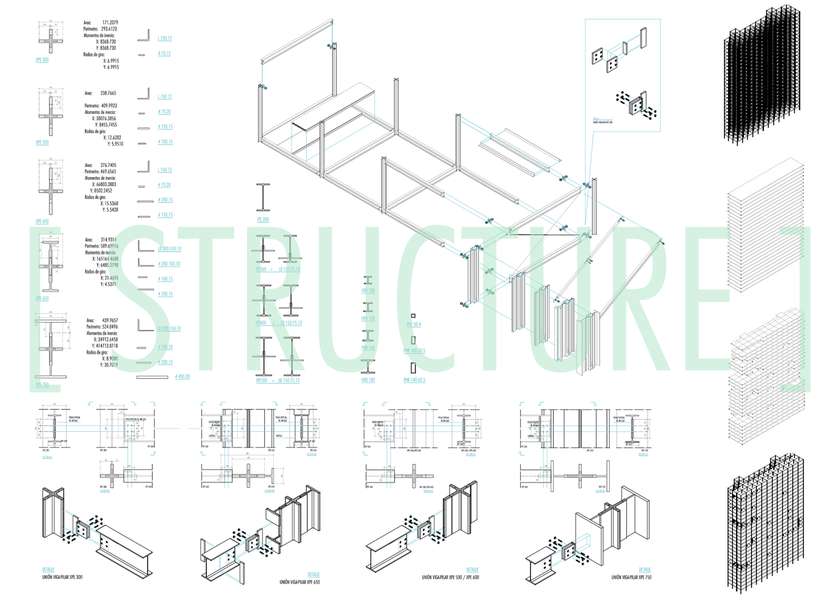
The structure is continuous, thus becoming the rule of the future construction of the building and adjusts the module housing. This structure will also become the limit of the construction as well as the wall was the edge of the old city, but can always be exceeded, and finally the structure becomes nothing, when the vacuum can not be built. This structure is theoretically implemented through cross sections, allowing the possibility to introduce reinforcements to help grow the building.
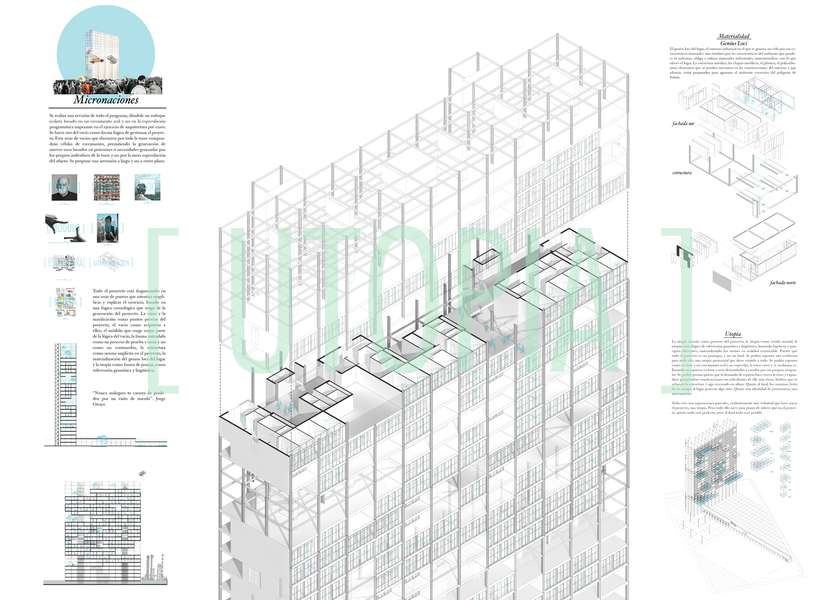
At the end, nothing will be perfect, but anything will be possible.
Finally, what is generated is a starting point, only thought through proyectual utopia that give meaning to everything. You would think as the object continues to grow, as this theoretical tower are amplified based on places generated by the users themselves. This growth breaks down the barriers of the building as object generating something, a sense of belonging, a micronation.